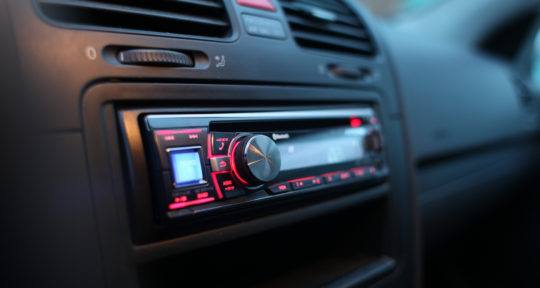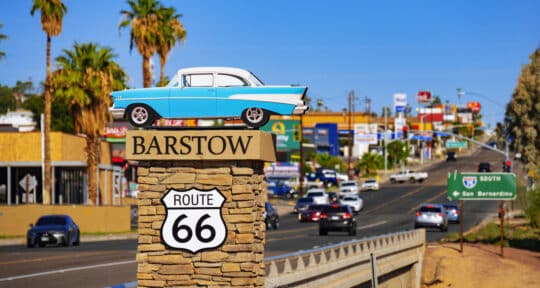Every vanlifer has their own reason for getting into the lifestyle. But, it seems that for almost everyone, once they start, they rarely look back.
It’s not often that you find vanlifers who got into the lifestyle because of convenience, but that’s exactly what attracted Stefany and James of FitRV. They’re great examples of how you don’t have to give up all of the conveniences of having a home to come back to. And, James has become something of a pro at modding their van to make it into their personal dream vehicle.
Read on to find out how this rad couple makes vanlife work for them and their awesomely active lifestyle!
What was life like before you lived on the road? What inspired you to make the change?
Stefany: Well first off, we’re only on the road half-time as we still have a sticks and bricks home. That’s mostly because we need a place where James has a shop and can tear Lance (that’s the name of our campervan) apart and do all sorts of unnecessary-but-fun mods…which is his favorite past-time.
Before we had our first campervan, however, our weekends were much less convenient. You see, we are cyclists and runners who like to participate in endurance events. These events, as we all know, always seem to start at ridiculous-thirty in the morning. So we’d get up while it’s still dark out and sane people are still sleeping, and drive in our car to the freezing-cold start line which, without fails, is in the middle of nowhere. And then once there, we’re faced with the long lines for the porta-potties.
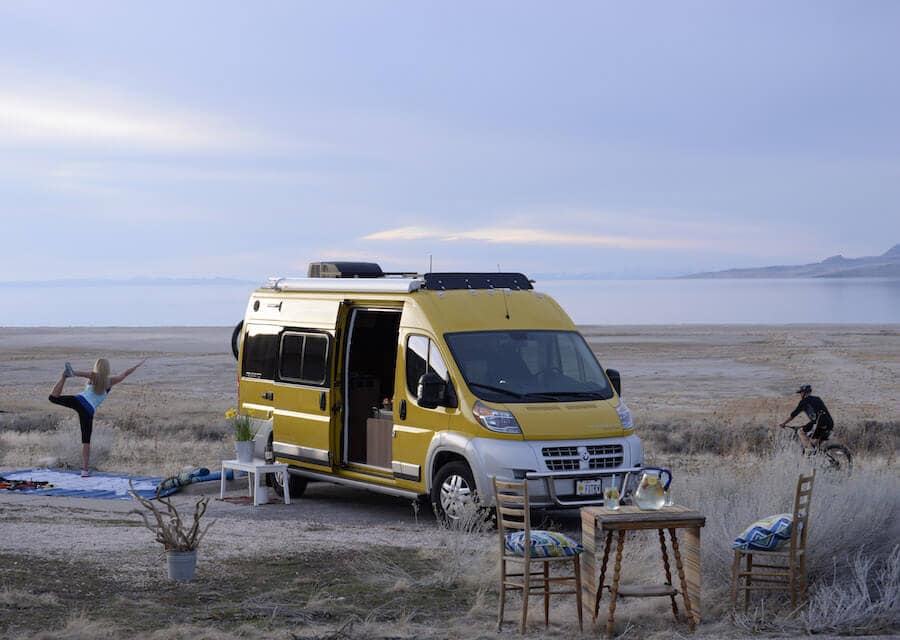
So one day, as we stood in the porta-potty line, freezing, in the dark, and desperately willing the line to hurry up, there was a light-bulb moment. I said to James, “You know, I bet we could find an old beater of a campervan we could bring to races…those things have bathrooms! And heck—we could even camp the night before right at the start line so we could sleep in!”
And that was how we ended up with our first van, Das Bus. But we didn’t just stop at taking Das Bus to weekend events. Turns out it opened up a whole new world packed with adventures and endless travel possibilities (and sites like Roadtrippers wanting to do interviews with us).
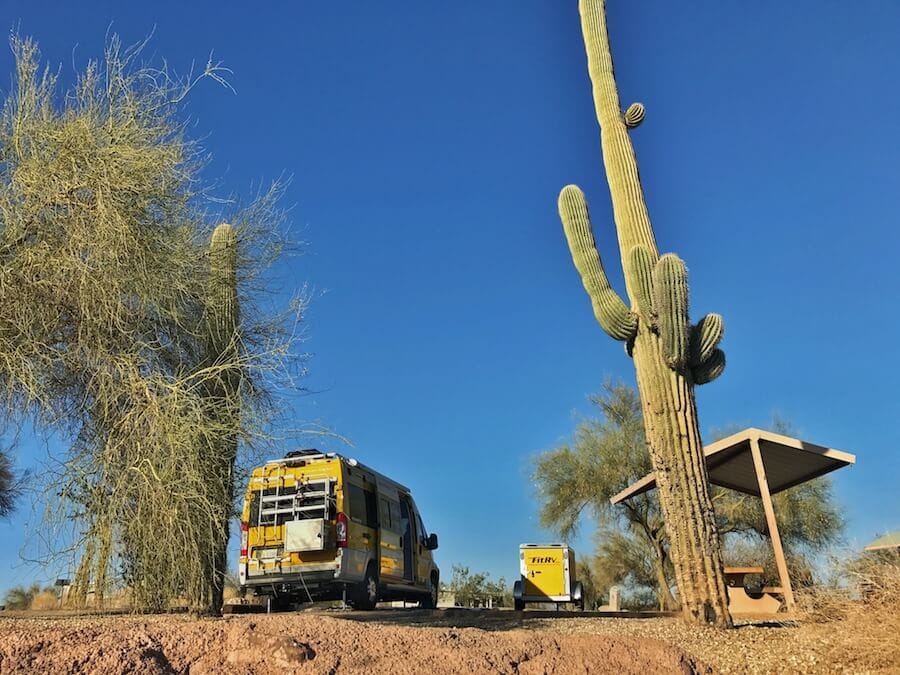
Tell us about your ride. How old is it? How long have you had it? Did you do any work on it?
Lance is a screaming-yellow 2016 Winnebago Travato 59G, and we’ve had him three years now. He’s a super special Travato because Winnebago actually did some customizations to make Lance be the ultimate cycling-support vehicle. Beyond the original customizations Winnebago did, James has spent the last year modding out Lance.
I don’t even know where to start with all the mods! We have a composting toilet, we have an incredible lithium and second alternator system that allows us to easily go off the grid (and still be able to run the air conditioner!), and on top of those, too other many mods to mention. Come swing by our website, James writes about them as he does them.

What do you wish was different about it?
James loves everything about Lance, and all the things he didn’t love, he’s already modded out. For me, I wish the bed was bigger! That’s the thing about campervans, though. To get the freedom and mobility the small space affords, you have to sacrifice somewhere.

Other than the ride, what other preparations did you need to make to transition to living on the road?
There was a ton of learning and researching we had to do when we got our first campervan. Bringing our first van home was incredibly overwhelming. We knew nothing about RVs! We had to learn about dumping the tanks, how the electrical worked, what maintenance needed to be done… it felt like so much!
James didn’t sleep that first week after we purchased Das Bus because he was up all night poring over forums online, reading manuals, and researching anything relevant he could find to help him understand that confusing hunk of metal out in the driveway. But really, once we started getting the hang of how it functioned, it wasn’t that hard to manage at all.
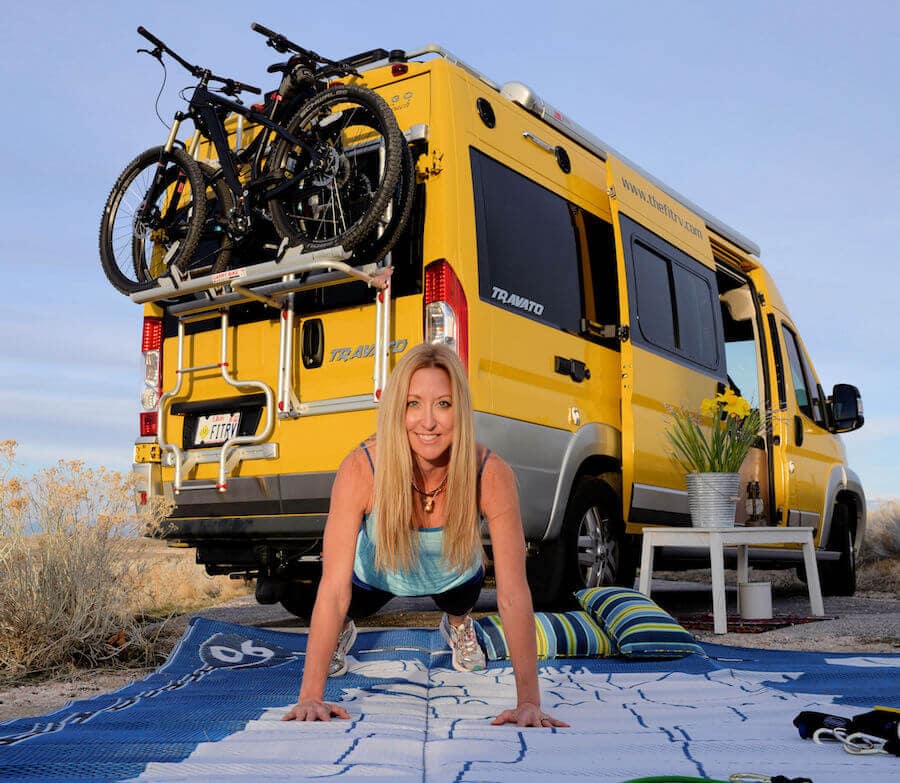
Where are you now? Where are you headed next? How do you decide where to go?
You’ve caught us at the sticks and bricks in the Salt Lake City, Utah area right now. We’re here since we have a new tiny bike-hauling trailer we call George, and James is in the middle of modding it out so we can (sometimes) pull it when we’re on the road.
We travel with a cat named Mel, too! It’s nicer in the van for Mel when we don’t haul the bikes in there; he has more space that way. We’re headed out shortly from Utah to the Midwest. We have a very special rally we attend in Iowa each July, so we’ll take our time getting there and will camp and ride our bikes as we work our way east.

What’s the hardest part about living in a van? What have been some unexpected challenges?
I think the hardest part, especially as a couple, is learning to share space. Even moving about can be a challenge as the van’s so small, really only one person can be up and moving at a time. So you learn to do what I like to call the “Class B shuffle.” It’s sort of like a dance.

Where do you eat most of your meals?
We mostly cook in the van, and love to find local farmstands so we can eat fresh food grown right there in the area we’re visiting. We do occasionally like to try local restaurants, and especially love farm-to-table-style restaurants, because, again, that way we know we’re eating locally grown fare. For some weird reason it makes the meal feel more special and taste better. We love making local foods be a running theme for our road trip adventures!

Where do you find Wifi?
We don’t worry so much about Wifi as we do about good cell reception. James still has a pesky day job, though luckily he can work remotely, and that requires good service. We hotspot our own phones for internet. We have a cell booster installed in the van and we highly recommend getting one if connection is important. To find cell service, we simply research the area before we go by checking cell coverage maps, reading reviews from other campers, and sometimes we just cross our fingers and hope for the best.
How do you shower?
That depends on where we land. If we’re at a state park with showerhouses, most likely we’ll shower there. If we’re boondocking somewhere remote with no facilities, we shower in Lance’s wet bath.
Where do you park your van for the night? What kinds of places do you like to stay at?
I’d say we mostly hit state parks, and that’s because they tend to be a cross between going full-on remote camping and being at a full-service campground. Since we need to stay within cell service range, and that’s the most deciding factor about where we land, many state parks meet that criteria. Plus they’re always scenic, surrounded in nature, and tend to be less packed than other options.
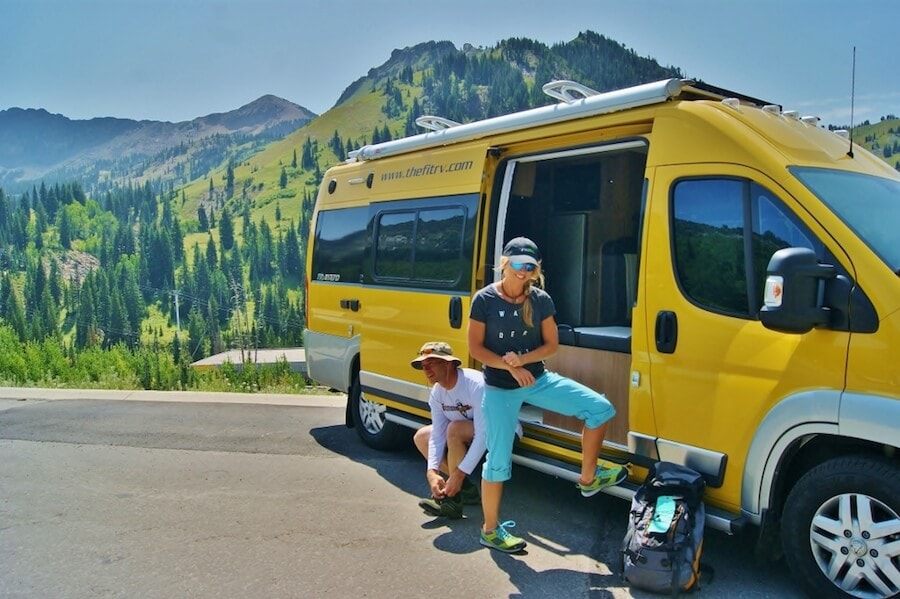
What are some essential tools that make living on the road easier?
We won’t mention the basics (hoses, levelers, surge protectors), because those are can’t-live-without expected. The best traditional “tool” advice we can give is to get a good multimeter and learn how to use it. So many of the problems you encounter on the road are electrical, and nothing beats a good multimeter for diagnosing them.
But the best tools for making life on the road easier all involve information. Life is a lot easier when you know the answers to questions like: Where can we camp? What is there to do here? Where can we dump? How do we get around this traffic? What is the cell coverage like there? And so on. These days, the best way to get that information is with smartphone apps. We have about nine we use regularly, and they cover navigation, camping spots, cell and internet service, and roadside attractions. You might even find the Roadtrippers app on our phones if you looked (wink wink).
What lessons have you learned that you would pass on to those aspiring to live on the road?
Our best advice for newbies is this: Plan to have your plans change. Living on the road is ever-changing, incredibly dynamic, and so much is out of your control. You might head to a boondocking spot you heard about and the road is washed out. You might plan to camp for 3 days, but you’ve run out of water. You might land somewhere amazing, like Joshua Tree, only to have obnoxious neighbors on both sides, one cranking Stevie Nicks and the other cranking Bad Company (yes, that happened).
Point is, you’ve got to learn to accept all that as part of the adventure. If you can be flexible with life on the road and embrace the unexpected, you will have one heck of an incredible journey.


